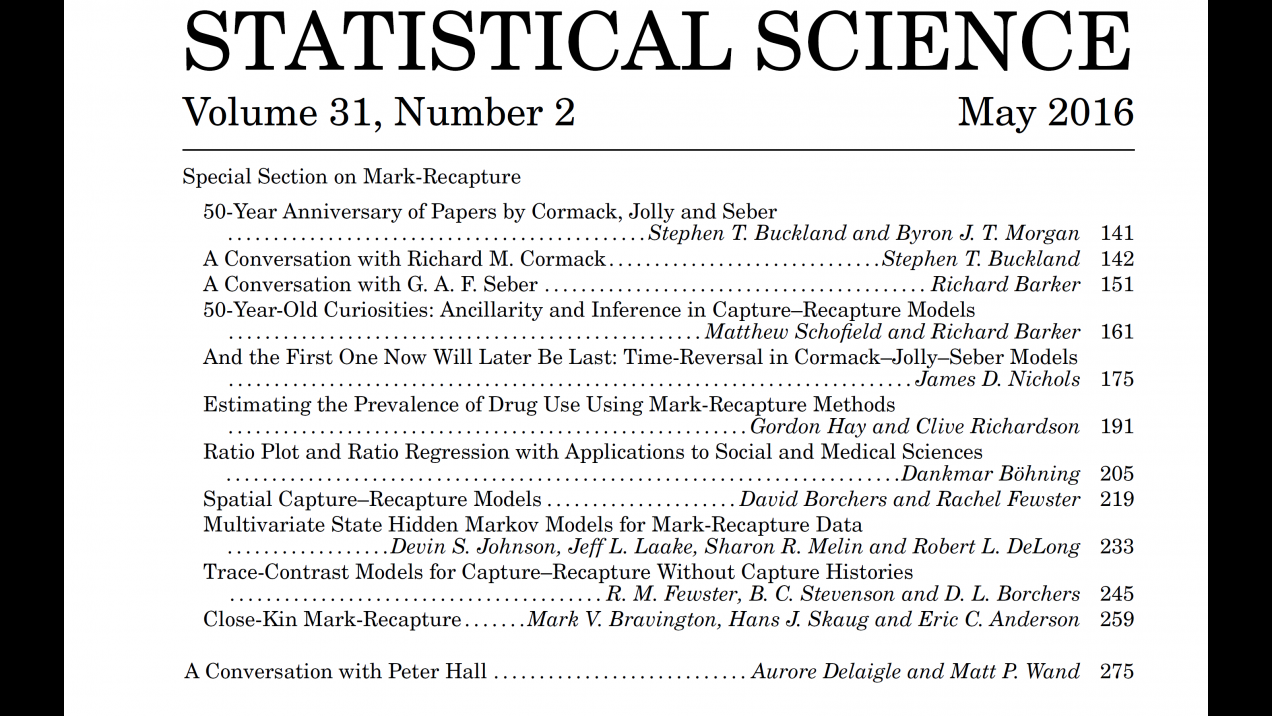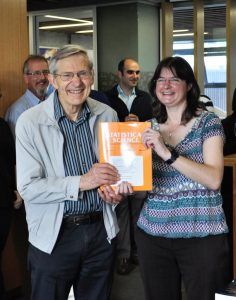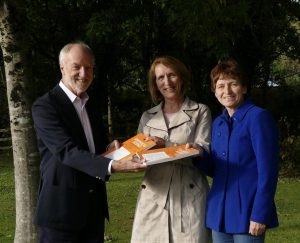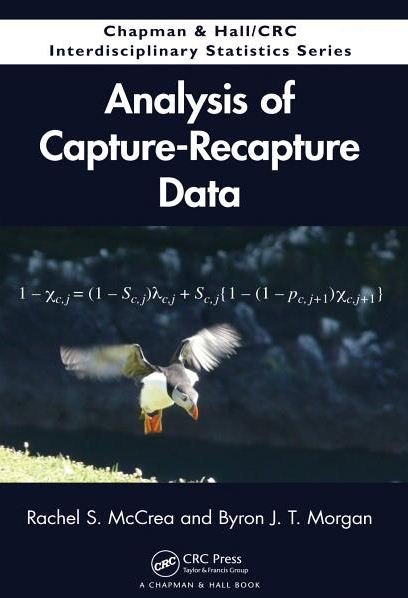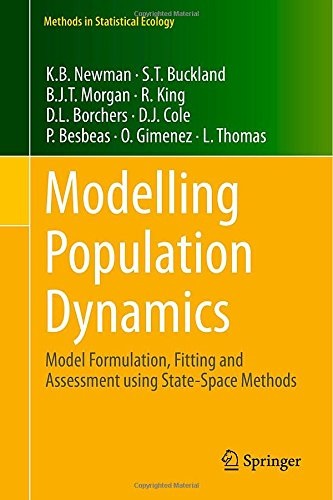Just over 50 years ago, three papers appeared which independently described the fundamental approach for analyzing capture-recapture data. It is now called the Cormack-Jolly-Seber model. This anniversary is celebrated in the second issue of Statistical Science, 2016, guest edited by Steve Buckland and Byron Morgan. It features transcribed interviews with George Seber and Richard Cormack. In addition there are eight research papers that demonstrate how the capture- recapture area is still developing, with applications to genetics, social and medical areas, as well as ecology.
Shown in the photographs are Steve presenting a copy of the issue to Richard, in St Andrews University, Rachel Fewster, a co-author of two of the papers in the issue, presenting a copy to George, in the University of Auckland, and Byron presenting two copies to George Jolly’s two daughters Heather Hannah and Fiona Davies. A third copy goes to their brother David Jolly, who lives in Saudi Arabia.

